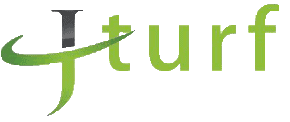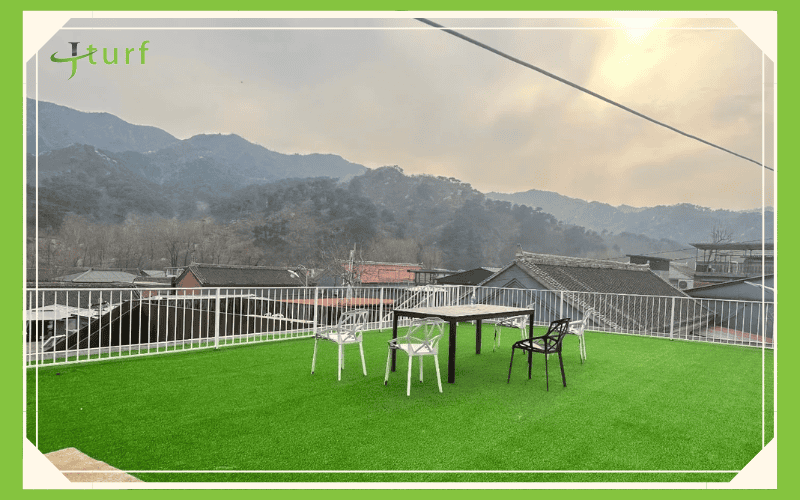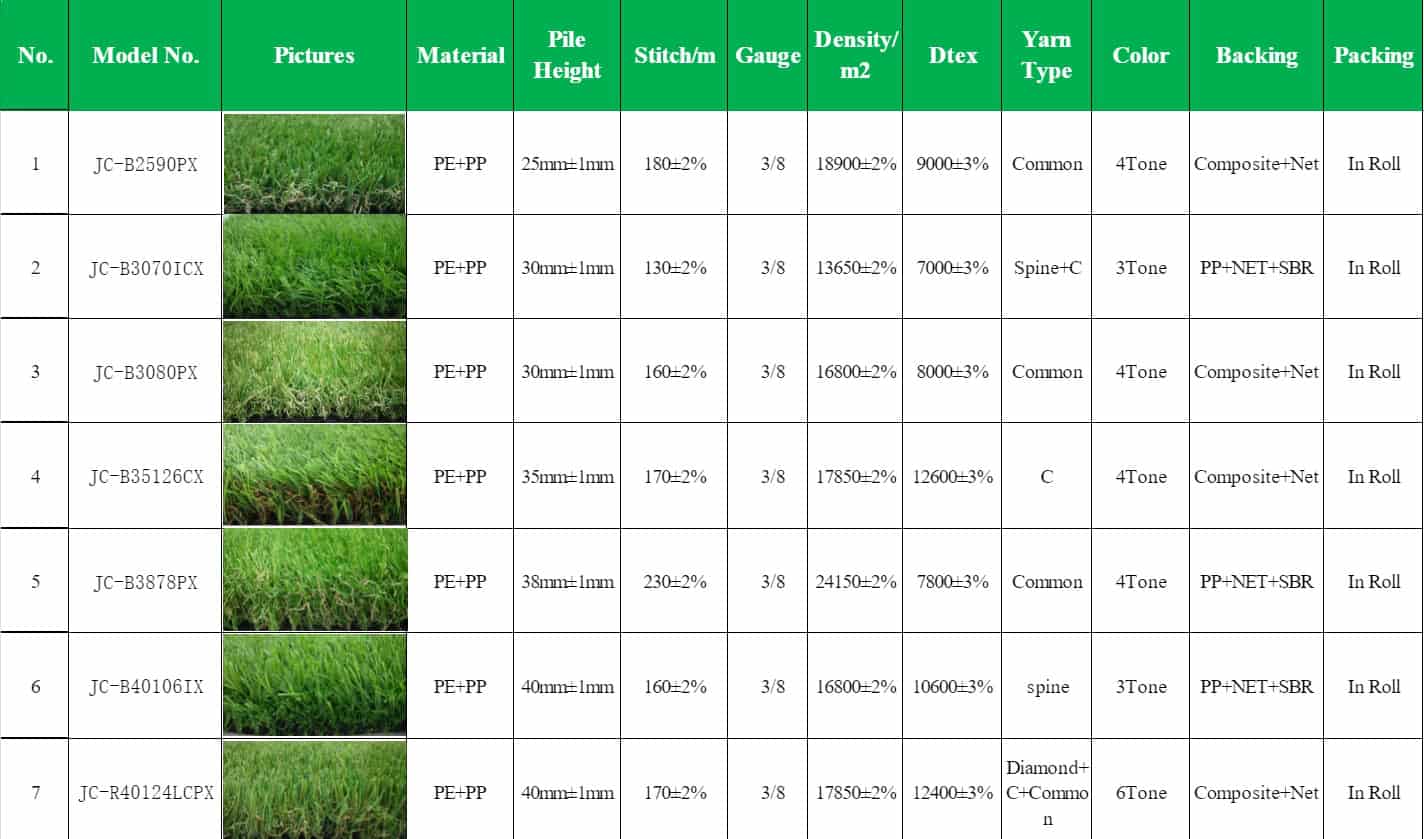In this article, we’ll explore why outdoor artificial grass is a great choice, covering its many benefits, how it performs in different settings, and how long it lasts. We’ll also discuss the cost factors to consider and whether there’s a difference between indoor and outdoor turf. Whether you’re looking to upgrade your lawn or create a pet-friendly space, this guide will help you make an informed decision.
Can Artificial Grass Be Used Outside?
Yes, artificial grass is made for outdoor use and suits spaces like backyards, patios, and balconies. It’s a low-maintenance alternative to natural grass, ideal for areas with poor growing conditions or where water conservation is important.
Types of Outdoor Artificial Grass
Outdoor artificial grass is mainly categorized by its yarn type—polyethylene, polypropylene, and nylon—each offering distinct benefits suited to different outdoor needs and product formats.
Polyethylene: Soft, Durable, and Versatile
Polyethylene is the most common material for outdoor turf due to its balance of softness, strength, and natural look. It’s widely used in synthetic turf rolls, ideal for lawns, parks, and large outdoor spaces.
This material is also favored for pet-friendly artificial grass, offering a non-abrasive surface that’s safe for paws and easy to clean thanks to its excellent drainage.
Polypropylene: Lightweight and Decorative
Polypropylene is a more affordable option, suitable for low-traffic or decorative use. It’s often used in artificial grass rugs and mats, which are perfect for balconies, patios, or temporary setups.
While less durable than polyethylene, it serves well as a thatch layer to add texture or cushion in landscape turf.
Nylon: Strongest and Most Resilient
Nylon offers unmatched durability and is ideal for high-impact areas. It’s commonly used in high-density sports turf, where resistance to wear and shape retention are critical—such as in training fields, agility zones, and sports venues.
Though pricier and stiffer, nylon turf delivers long-term performance under heavy use.
Benefits of Using Outdoor Artificial Grass
From reducing maintenance efforts to being more sustainable, it’s a solution that can transform any outdoor space.
Low Maintenance and Cost-Effective
Outdoor artificial grass brings about a drastic reduction in the time and money that would otherwise be poured into lawn care. Forget about regular mowing, watering, and fertilizing—tasks that not only take up your time but also add to your utility bills and maintenance costs. With synthetic turf, these ongoing costs disappear, leaving you with a beautifully green lawn year-round.
You’ll save:
- On Water Bills: Artificial grass doesn’t need watering, which is especially valuable in water-scarce areas.
- On Lawn Services: No more paying for landscapers to mow or maintain your lawn.
Built to Endure All Weather Conditions
One of the key benefits of artificial grass is its ability to withstand a wide range of weather conditions. Whether exposed to intense summer heat, heavy rainfall, or even snow, your artificial lawn will maintain an excellent condition. Unlike natural grass, which can suffer from uneven growth, mud patches, or bald spots, synthetic turf remains consistent, no matter the weather. With proper care, it can last for many years(20 years).
- In Extreme Heat or Cold: Artificial grass won’t burn under the sun or freeze during the winter.
- No Muddy Spots: You won’t have to deal with soggy, muddy grass during rainy days. The grass drains easily, keeping your outdoor area clean and usable.
This makes outdoor artificial grass ideal for climates where maintaining a natural lawn would be difficult or costly.
Pet-Friendly and Child-Safe
When it comes to families with pets and children, outdoor artificial grass stands out as an exceptional choice. Natural grass can be easily damaged by pets running and playing, leading to worn-out patches or muddy paws. With artificial grass, you get a durable, low-maintenance solution that is safe for both pets and kids.
- For Pets: Synthetic grass is made to resist damage from pet play, and it’s easy to clean. Say goodbye to all that fretting about brown spots or digging messes!
- For Kids: The soft texture of artificial grass is safe for children to run and play on. It also doesn’t harbor insects or allergens like natural grass, creating a cleaner, safer environment.
In addition to being safe, artificial grass provides a more stable surface for pets and children, ensuring they can enjoy their time outdoors without the mess or hazards associated with natural grass.
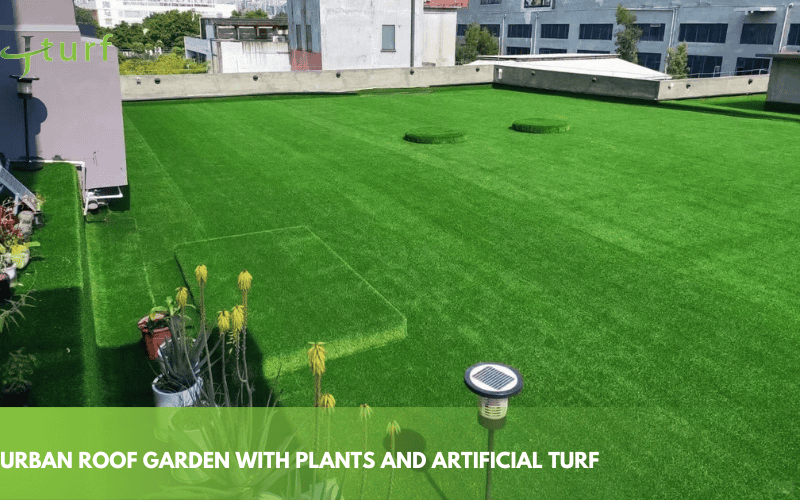
A Beautiful Lawn Year-Round
Outdoor artificial grass stays green and vibrant all year, without suffering from dry patches in summer or winter damage. It’s ideal for areas where natural grass is hard to maintain and perfect for dry or water-scarce regions since it requires no watering.
Eco-Friendly and Sustainable
Artificial grass is a more sustainable choice than natural lawns. It eliminates the need for harmful chemicals like fertilizers and pesticides and conserves water by requiring no irrigation, making it a great option for water-conscious areas.
Versatile for Multiple Uses
Artificial grass is highly versatile, perfect for landscaping, garden beds, and decorative borders. It’s also great for small spaces like patios and balconies, where natural grass may not thrive, and can be used creatively, like in artificial grass walls, to add texture and style to any outdoor space. Our turf is available in different textures, lengths, and shades to suit individual preferences.
How Does Outdoor Artificial Grass Perform in Different Spaces?
Outdoor artificial grass serves as a malleable solution, breathing new life and enhancing the charm of a wide array of outdoor realms. At JCturf, we offer high-quality synthetic turf designed to perform beautifully in any setting.
Artificial Grass Around Pools: Artificial grass around pools provides a clean, slip-resistant surface that resists water, unlike natural grass that can get soggy or muddy. It’s durable, UV-resistant, and easy to maintain, keeping your pool area neat and safe year-round.
Artificial Grass Around the House: Using artificial grass around the house enhances curb appeal with minimal effort. It creates a uniform, green look without the need for frequent maintenance, making it ideal for homes in areas with harsh weather or water restrictions.
Artificial Grass Around Patios: Artificial grass is perfect for patios, adding a fresh, soft surface for outdoor activities. It’s durable, handles foot traffic well, and remains green and clean without regular upkeep, making it ideal for areas where natural grass struggles.
Artificial Grass Around Trees: Installing artificial grass around trees helps eliminate mud and uneven growth. It prevents weeds and requires no irrigation, making it a low-maintenance option for landscaping around trees while maintaining a tidy appearance.
Artificial Grass for Dogs: Artificial grass is a pet-friendly choice for areas where dogs play or relieve themselves. It’s easy to clean, resistant to wear, and drains well, preventing odors. Unlike natural grass, it won’t be damaged by digging or urine.
Artificial Grass for Balconies: Artificial grass for balconies transforms small spaces into green retreats. It’s easy to install and perfect for urban environments, providing a low-maintenance way to add greenery to limited spaces like balconies.
Artificial Grass for Walls: Artificial grass for walls adds a unique touch to your outdoor décor. It’s ideal for creating vertical gardens or feature walls, offering a green aesthetic with minimal upkeep, perfect for patios or courtyards.
Artificial Grass for Golf: It provides a realistic, level surface for practicing golf, offering durability and a consistent playing experience year-round.
Artificial Grass Carpet for Mini Football Fields: Artificial grass carpet is ideal for small football fields or sports areas. It creates a durable, smooth surface for outdoor games and requires little maintenance, standing up to heavy foot traffic and ensuring a quality playing surface.
Artificial Grass for Children’s Play Areas: Artificial grass creates a soft, safe, mud-free surface for play zones with swings, slides, or climbing frames. It lowers injury risks and stays clean and green in any weather.
Artificial Grass for Garden Accents: Laid around flower beds, paths, or borders, artificial grass adds a neat, polished look while reducing weeds and mud. It’s a simple way to elevate landscaping with minimal effort.
Artificial Grass for Entertainment Areas: Ideal for dining spots, BBQ corners, or fire pits, artificial grass adds a clean, inviting surface underfoot. It’s durable and low-maintenance, perfect for frequent outdoor use.
Artificial Grass for High-Traffic Areas: In parks, playgrounds, or busy footpaths, artificial grass withstands heavy use without wearing out. It’s a long-lasting, tidy option where natural grass can’t keep up.
Artificial Grass for Rooftop Gardens: Artificial turf transforms rooftops into relaxing green spaces without the need for soil or irrigation. It’s lightweight, stylish, and perfect for compact urban settings.
Artificial Grass in Areas with Poor Soil or Shade: For shaded or poor-soil areas where real grass struggles, artificial turf delivers year-round greenery without relying on sunlight, nutrients, or watering.
Is It a Good Idea to Put Artificial Grass in the Backyard?
- Yes, artificial grass is an absolute gem for your backyard. It’s a low-maintenance, budget-friendly option that stays lush and green all year long. You can kiss mowing, watering, and fertilizing goodbye! Whether for relaxation, entertaining, or play, it provides a beautiful, functional space.
How to Install Outdoor Artificial Grass?
Whether you’re covering a backyard or creating a new outdoor space, following these steps will make the installation easy and effective.
Step 1: Prepare the Area
- Get rid of any current grass, weeds, and debris in the area. After that, level the ground to make a smooth surface for laying the turf.
Step 2: Lay the Base
- Lay down a layer of crushed stone or decomposed granite over the area. It will help with drainage and keep the surface stable. After that, compact the base tightly to make sure it’s firm and won’t shift.
Step 3: Roll Out the Turf
- Unroll the artificial grass and place it correctly, with the fibers facing the way you want. Then, cut the edges so they match the shape of the area.
Step 4: Secure the Grass
- Secure the edges of the artificial grass using landscape staples or turf nails. You want the grass to be nice and tight, but don’t pull it so hard that it’s stretched out.
Step 5: Sand Infill (Optional)
- For areas with high foot traffic, add sand or rubber infill to help the turf stay in place and maintain its appearance.
How Do You Secure Artificial Grass Outside?
Securing artificial grass ensures it stays in place and maintains a smooth, professional appearance. For soft surfaces like soil, use landscape staples spaced 4 to 6 inches apart. For harder surfaces like concrete, turf nails are ideal for anchoring the grass.
To join seams, use seam tape and adhesive to ensure a seamless finish. Properly securing the turf prevents shifting and helps maintain its clean, polished look.
Can I Use Artificial Grass as an Outdoor Rug?
Yes, artificial grass works perfectly as an outdoor rug. Simply measure the area, cut the turf to size, and lay it down like a regular rug.
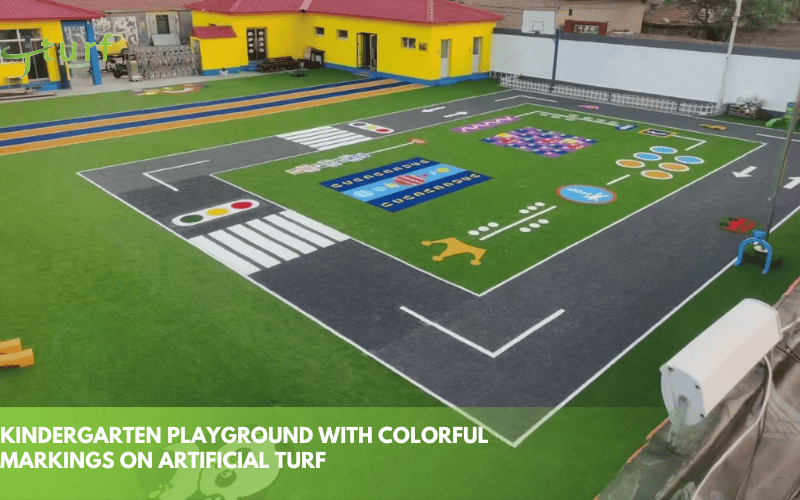
How Long Does Outdoor Artificial Grass Last?
Outdoor artificial grass usually lasts about 10 to 25 years. How long it actually holds up depends on things like how often it’s used, the weather it’s exposed to, and how well it’s maintained.
Factors Affecting Lifespan
1. Quality of Turf: The material matters. Premium options like nylon and polypropylene are more durable and UV-resistant than cheaper alternatives. Dense pile and strong backing also contribute to long-term performance.
2. Installation: Proper installation ensures good drainage and prevents problems like water pooling or edge lifting. Poorly installed turf is more likely to suffer early damage and uneven wear.
3. Usage Level: Areas with heavy foot traffic, sports activity, or active pets will see faster wear. Fiber flattening and matting are common in these zones, especially without infill or brushing.
4. Climate Conditions: Exposure to intense sunlight, heat, snow, or rain can shorten lifespan. Choosing turf that’s UV-resistant and rated for your local climate will protect against early fading and degradation.
5. Maintenance Routine: Regular care helps extend the lifespan. Neglect can cause fibers to mat, infill to compact, and stains to become permanent.
Best Practices to Extend the Life of Your Artificial Grass
- Brush Regularly: Use a stiff broom or power brush to lift matted fibers and keep the pile upright—especially in high-use areas like walkways or play zones.
- Clean Debris and Pet Waste: Rinse off dust, hose away spills, and promptly clean pet messes to avoid bacteria, stains, or odors.
- Replenish Infill (if applicable): Infill materials like silica sand or rubber help support the grass blades and enhance drainage. Top up periodically to maintain structure.
- Control Weeds: While turf limits weed growth, some may sprout around edges or seams. Pull them out early to prevent damage to the backing layer.
- Address Stains Promptly: Clean spills or organic matter before they become permanent. Use turf-safe cleaners when needed.
- Schedule Professional Cleaning: Periodic deep cleaning by turf specialists can remove embedded dirt, restore pile height, and extend the surface’s life span.
Can You Store Artificial Grass Outside?
Not recommended. Though designed for outdoor use, artificial grass should be stored properly when idle. Extended exposure to harsh weather can cause deterioration. Keep unused turf in a dry, shaded spot or cover it to shield against UV rays and environmental factors that shorten its lifespan.
Cost Considerations for Outdoor Artificial Grass
The cost of artificial grass typically ranges from $5 to $20 per square foot, depending on the quality of the turf, area size, and installation requirements.
Key Factors Influencing Cost
1. Turf Quality & Type: Basic synthetic turf may cost between $3–$7/sq ft, while premium options (e.g., nylon, UV-resistant, highly realistic turf) can cost significantly more. Premium turf offers better durability, appearance, and lifespan.
2. Installation Complexity: Labor costs range from $3–$9/sq ft, depending on terrain difficulty, shape of the area, and the need for custom cuts or edge fitting. Flat, open areas are cheaper to install, while sloped or irregular spaces increase costs.
3. Site Preparation: Preparing the ground is essential. Tasks like removing existing grass, leveling, and base layer installation can add $1–$3/sq ft. Poor prep can lead to drainage issues and reduce turf lifespan.
4. Infill Material: Infill options—such as sand, silica, or rubber—affect both performance and price, ranging from $0.50–$2.50/sq ft. Infill helps with cushioning, drainage, and keeping blades upright.
5. Weed Barrier Fabric: Installing a weed barrier under the turf helps reduce maintenance. Expect to pay $0.50–$1.00/sq ft.
6. Delivery & Logistics: Delivery fees depend on supplier location and project size. Large orders or remote areas may incur higher transportation costs.
7. Additional Features: Features like stepping stones, flower bed edging, or decorative borders add customization—but also extra cost.
Long-Term Cost Benefits
Although upfront expenses are higher, artificial grass offers substantial long-term savings:
- No mowing, watering, fertilizing, or pesticides
- Minimal repair or reseeding costs
- Lower utility bills and reduced maintenance equipment
Is Outdoor Artificial Grass a Good Investment?
Yes, outdoor artificial grass can be a worthwhile investment. Though it may cost more initially, the long-term savings make it a valuable option:
- Maintenance Savings: With no need for regular watering, mowing, or fertilizing, artificial grass saves time and money.
- Durability: Artificial grass typically lasts 15 to 25 years, making it a durable solution for homeowners who want a low-maintenance, long-lasting lawn.
Overall, the savings and durability make outdoor artificial grass a good investment, particularly for those seeking a low-maintenance, water-efficient option.
Is There a Difference Between Indoor and Outdoor Turf?
Yes, indoor and outdoor artificial turf differ significantly in materials, durability, UV resistance, drainage, and usage. While both serve as durable, low-maintenance surfaces, they’re engineered for different environments and performance needs.
| Feature | Indoor Turf | Outdoor Turf |
| Materials | Often uses nylon fibers for high traction and durability | Typically uses polypropylene or polyethylene for UV/weather resistance |
| Durability | Durable for indoor sports but not built for exposure to sunlight or weather | Designed to withstand sun, rain, and temperature changes |
| UV Resistance | Usually not UV-resistant, may fade under direct sunlight | Built with UV-resistant materials to prevent fading and breakdown |
| Drainage | No drainage system required | Includes perforated or permeable backing for efficient water drainage |
| Infill Requirement | Often no infill needed, especially for gym or sport floors | Usually requires sand or rubber infill for support and cushioning |
| Maintenance | Requires less maintenance (no outdoor debris or weather impact) | Needs regular cleaning, infill top-up, and care for drainage |
| Thickness | Typically thinner and softer for indoor comfort and agility | Thicker and denser to withstand traffic and outdoor elements |
| Texture | Smoother, traction-focused; less emphasis on mimicking natural grass | More textured and realistic in appearance, designed to resemble real turf |
| Aesthetics | May look more synthetic or uniform | Designed for a natural lawn-like look |
| Common Uses | Gyms, indoor sports centers, event spaces, patios | Lawns, sports fields, playgrounds, landscapes |
| Foot Traffic | Built for low to moderate indoor traffic, or specific athletic use | Built for high traffic like backyard use, pets, or sports activity |
| Cost (General) | Can be more affordable, especially without infill or drainage needs | Typically higher initial cost, but built for outdoor performance and longevity |
Your Trusted Outdoor Artificial Grass Supplier for Quality Solutions
At JCturf, we specialize in providing high-quality outdoor artificial grass for various applications, including residential and commercial use. As a trusted supplier and manufacturer, we offer durable and realistic turf solutions that will transform your outdoor spaces with minimal maintenance.
If you’re ready to make the switch to a greener, low-maintenance lawn, explore our range of artificial grass options. Whether you’re looking to enhance your backyard, patio, or pool area, we have the perfect turf to meet your needs.
